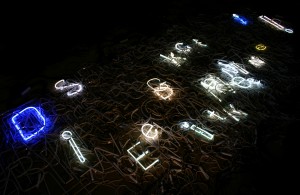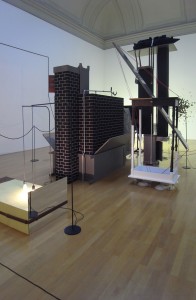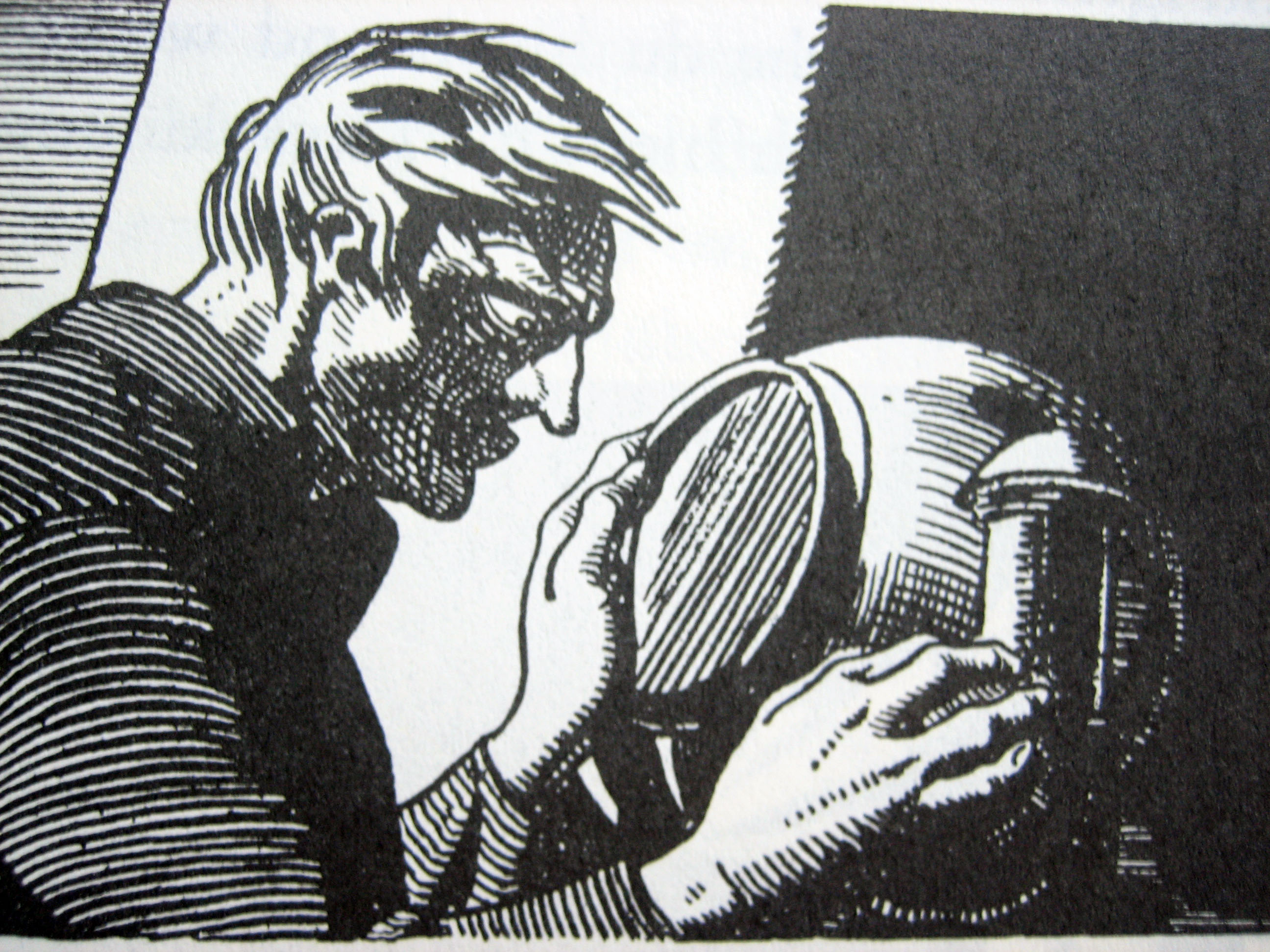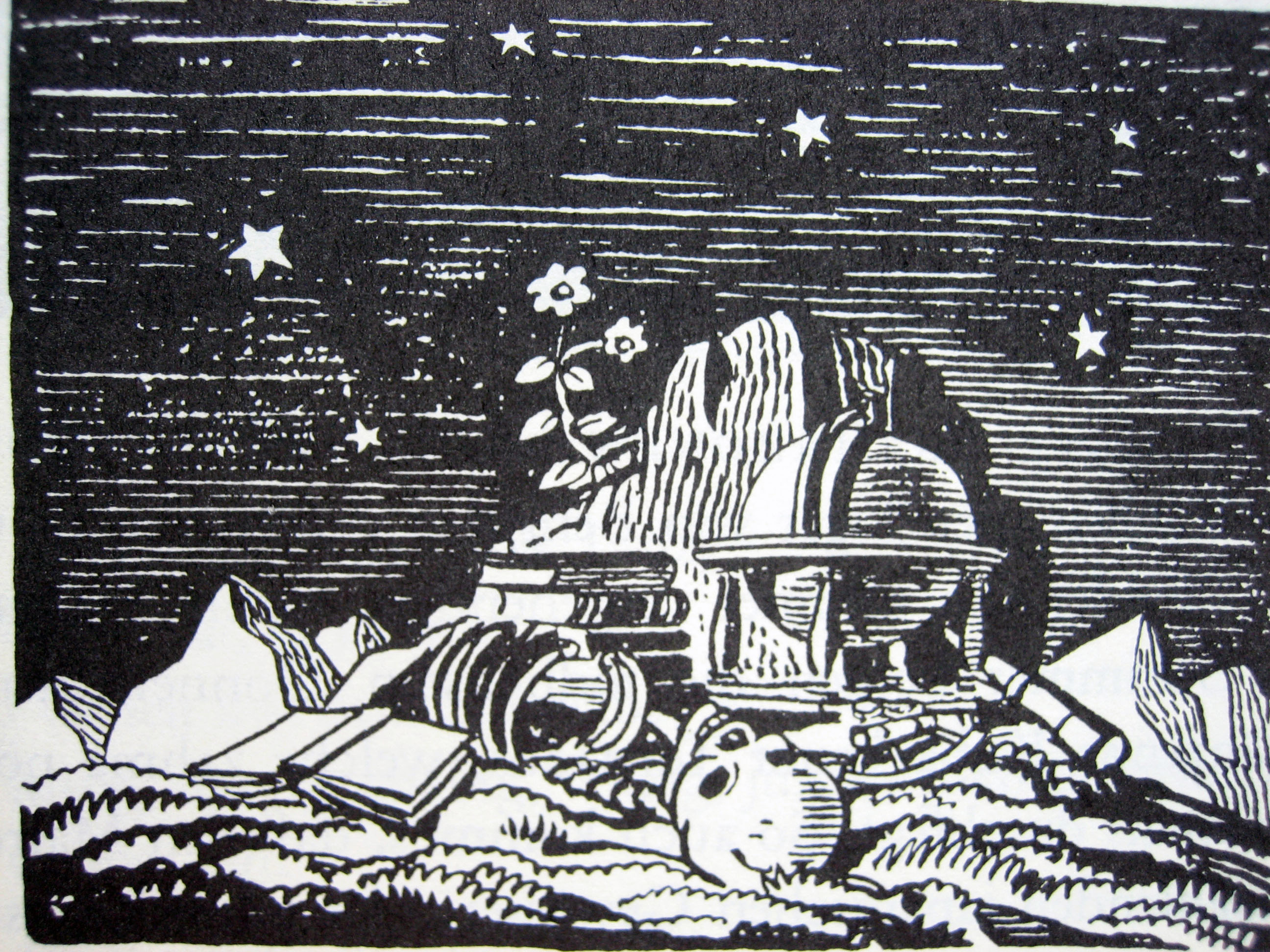Journal of the Habitat Centre, New Delhi 2009. Edited by Alka Pande and Nils Röller

Biju Joze: Swistik pocket knife 2006. Source: Made by Indians. Paris: Galerie Enrico Navarra, 2007
Editorial Nils Röller
Indian poet Sampurna Chattarji opens a verse writing “The soul is a moving number”. These are words of the mythical mathematician Pythagoras who may have eastern origins. Quoting Pythagoras the Mumbai based writer expresses one aspect of cultural exchange between India and Europe. It is an exchange which has happened in the past, for example with the invention of the zero, and which is enforced on a variety of levels today. Here for example with this issue of the Journal of the Habitat Centre which the reader holds now in his hands.
Placed in the centre of New Delhi the Habitat Centre manifests by its architecture and by its organisational structure a care for openness and interest towards the other. The other may have the face of artistic experimentation with today’s advanced technology and may have also the face of traditional expertise in producing storing devices like pottery. In this context it is an honour to invite Swiss authors to contribute to a publication on media art. It is a context which has a long tradition in calculation and is also marked by a tremendously fast growing expertise in the development of computer science and communication technology (see Bob Bishop in this Journal). The chance to contribute is also a challenge. It finds a theoretical framework in the history of media. In European antiquity the word “medium” expressed a temporal or a spatial relation between points of extreme distance. This understanding becomes here in two ways productive: On one hand it meets with the dynamics of contemporary India.
Indians are performing day per day a variety of techniques dealing with extremes: Between regularly practiced ancient oral and written traditions of chant, worship of the gods and spiritual conduct as one pole of activity, and modern global trends as another pole with its fast changing life styles, its economic crises and programs which come in company with confrontational strategies of religious fundamentalists. Therefore everyday life in India is a permanent crossing between diverse and antagonistic organisations of time and space. This crossing is also productive in the context of artistic productions and reflections on media on the other hand. It has partly been intellectually fuelled by a tradition of a german speaking discourse on media (see Vilém Flusser). It is today an exploration of time and space with digital technology.
Luckily, Switzerland has been able to maintain continuity in the artistic experimentation with digital technology. The essay of Tabea Lurk in this Journal emphasizes the beginnings of visual orientated computer art. These are here for the first time displayed in an international context. Festivals like the former Viper in Lucerne, the Videoex Festival at the Walcheturm in Zurich or the Shift Festival in Bale have been established as interfaces between artists and the interested public in Switzerland. The private institution Migros-Kulturprozent supports continuously artistic experimentation with media technology, being that single artists or being that cooperatives of artists who are spread over the entire territory of Switzerland (see Dominik Landwehr). Art schools in Aarau, Bale, Bern, Lucerne, and Zurich have introduced courses in media art in their curricula. In the German speaking media art scene Switzerland has gained a special significance. Because here, especially in Zürich, it has been possible to teach and to promote continuously courses in media art, while at other places the interest and support has decayed for several reasons. The Cabaret Voltaire in Zurich is supportive to this continuity. It offers a platform of experimenting with the tradition of DADA under digital conditions (Adrian Notz).
The contributing authors are mostly based in Bern, Bale and Zurich. These are cities of the German speaking part of Switzerland. It is a common denominator of the author’s discourses, that they avoid a general reflection on new media. Therefore the authors focus on “patches” like the archaeology of media (Siegfried Zielinski), questions of authorship (Giaco Schiesser), copyright (Felix Stalder), distribution and reception (Anette Schindler, Reinhard Storz, Verena Kuni), concepts of memory and consciousness (Peter Schneider), public art (Christoph Schenker), and instruments (Nils Röller).
The concept underlying this Journal pursues the argument that digital technologies such as computers and networks have brought such radical change to our daily lives that we have become blind to their power. Much like fish that do not notice a gradual discolouration of water, we have become insensitive to the “incisive changes in the way we think, feel, wish and act” that have been induced by digitization. But there are moments of disturbance which lead the authors to their patches of analysis. The term “patch” is here used in a positive way, as an invitation to connect singular fields of research together in one common texture. This texture is of such a scale that its patterns cannot be programmed by a single author, but perhaps by many. All the contributing authors holding positions in Switzerland were curious and attracted by the chance to share their patches with authors and readers in India. The attraction is enforced by the wish to exchange on issues which are of common interest as the wish to develop alternative ways of communication. The willingness to contribute to this Indian-Swiss cooperation was striking. It may be welcomed as a form of respect for the culture which gave humanity the concept of zero which keeps souls moving since centuries, especially since zeros and ones are essential for digital devices.
The production of this Journal was itself a question of trust into a balancing between rare, but encouraging personal meetings, and regular contacts via digital technology. For this chance and honour to collaborate I wish to express my gratitude to co- editor Alka Pande (Habitat Centre) and to Chandrika Grover (Pro Helvetia India). Thanks to Marina Sawall who was carefully lecturing and coordinating the exchange of texts and images, we could keep pace and confidence with the enormous speed of this production. The contributing authors and artists supported this production with their confidence and profession. Thanks to them more projects may become possible. For the idea of such an exchange between Switzerland and India talks with Marianne Burki (Pro Helvetia) were seminal. Christoph Schenker (IFCAR/ZHDK) and Giaco Schiesser (DKM/ZHDK) have been supportive and flexible in the process. All this could grow because of a three month Pro Helvetia grant to Barbara Ellmerer, who woke my interest for India with a stay at the Sanskriti Kendra in New Delhi. Since this stay I understand India as an invitation to participate in the adventure of globally evolving humanity. It is an adventure, which is also conditioned by the extremely differing scales of Switzerland and India: Between a nation with a long lasting tradition of democracy and a state which is the biggest democracy of the world; between an alpine country which has 7,7 million inhabitants and an international city like New Delhi, which has counted recently 14 million inhabitants; and between “old” Europe which has been educated by ancient indogermanic institutions and an India which reinvents itself under global conditions.
Contributions from Switzerland by:
Verena Kuni
Dominik Landwehr
Tabea Lurk
Adrian Notz
Nils Röller
Christoph Schenker
Giaco Schiesser
Annette Schindler/Reinhard Storz
Peter Schneider
Vilèm Flusser
Felix Stalder
Reinhard Storz
Siegfried Zielinski
Contributions from India by:
Abhishek Hazra
Shukla Sawant
Shuddhabrata Sengupta
Shai Heredia
Suresh Jayaram
Jitish Kallat
Sam Varadarajan
Bani Abidi
Shankar Barua
Alice Cicolini





